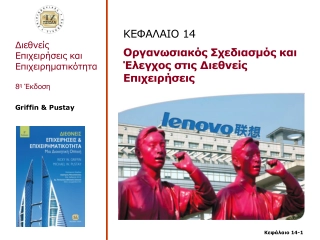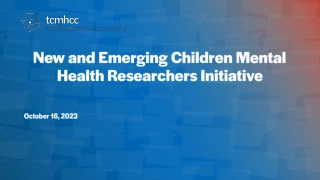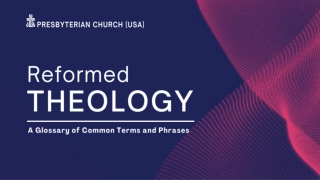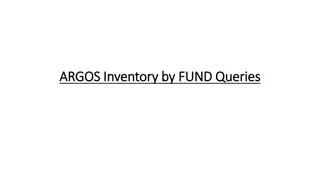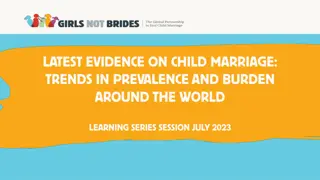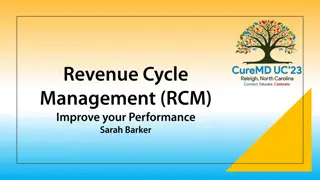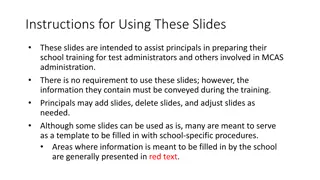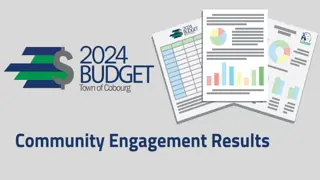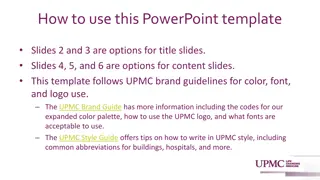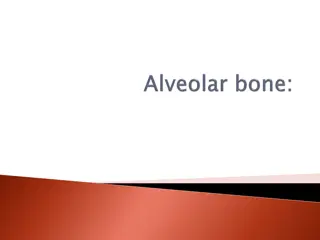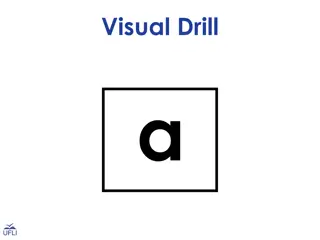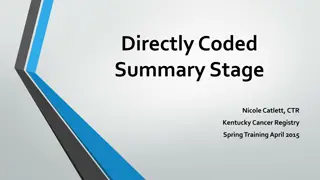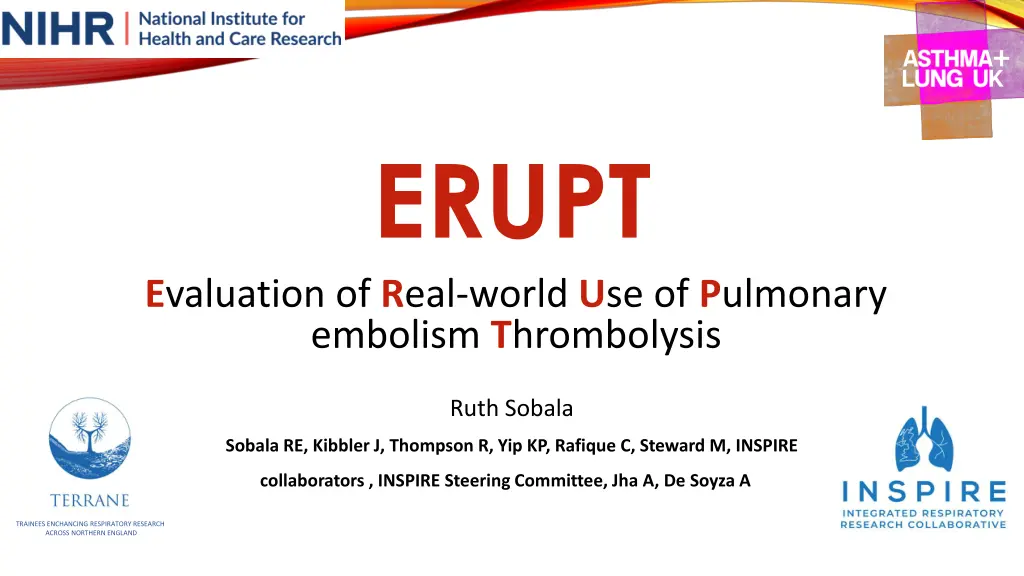
Real-world Use of Pulmonary Embolism Thrombolysis Study
"The ERUPT study evaluated the real-world use of thrombolysis for pulmonary embolism, assessing adherence to guidelines and outcomes. Key findings included low thrombolysis rates, use of reduced-dose regimens, and future plans for a UK thrombolysis registry. Conducted by postgraduate doctors-in-training, this study provided valuable insights for improving PE management." (376 characters)
Download Presentation

Please find below an Image/Link to download the presentation.
The content on the website is provided AS IS for your information and personal use only. It may not be sold, licensed, or shared on other websites without obtaining consent from the author. If you encounter any issues during the download, it is possible that the publisher has removed the file from their server.
You are allowed to download the files provided on this website for personal or commercial use, subject to the condition that they are used lawfully. All files are the property of their respective owners.
The content on the website is provided AS IS for your information and personal use only. It may not be sold, licensed, or shared on other websites without obtaining consent from the author.
E N D
Presentation Transcript
ERUPT Evaluation of Real-world Use of Pulmonary embolism Thrombolysis Ruth Sobala Sobala RE, Kibbler J, Thompson R, Yip KP, Rafique C, Steward M, INSPIRE collaborators , INSPIRE Steering Committee, Jha A, De Soyza A TRAINEES ENCHANCING RESPIRATORY RESEARCH ACROSS NORTHERN ENGLAND
METHOD METHOD Retrospective multicentre observational study. Thrombolysis with Alteplase for Acute PE. Study duration: September 2021 - September 2022. Primary outcome: To access whether UK clinical practice conformed with the European Society of Cardiology (ESC) guidelines on the diagnosis and management of acute PE.
SECONDARY OUTCOMES SECONDARY OUTCOMES 1. 2. 3. Frequency of thrombolysis (stratification of high, intermediate or low-risk). Frequency of reduced dose thrombolysis International Classification of Diseases (ICD) coding a. PE with acute cor pulmonale (ICD 126.0) b. PE without acute cor pulmonale (ICD 126.9) Service delivery context a. Healthcare setting in which thrombolysis was administered b. Clinical specialty making the decision to thrombolyse c. Presence of specialist PE services or access to out-of-hours Respiratory on- call support Timing of thrombolysis (in-hours versus out-of-hours) 4. 5.
SECONDARY OUTCOMES SECONDARY OUTCOMES 5. Clinical data including investigation results (biochemical and imaging) 6. Complication rates (0-4 hours, 4 hours-7 days, 7 days-4 weeks) a. Severity of bleeding i. Minor bleeding (not requiring intervention) ii. Moderate bleeding (requiring blood product transfusion or causing haemodynamic instability) iii. Major bleeding (requiring treatment other than blood product transfusion) a. Intracranial haemorrhage (ICH) b. Cardiopulmonary resuscitation (CPR) c. Further PE treatment d. Mortality
KEY MESSAGES 1.5% of acute PE cases were thrombolysed, and 24.1% of acute PE with right heart dysfunction. 59% of thrombolysis occurred in high-risk PE, 39% in intermediate-risk and 1% in low-risk. A reduced-dose regimen was used in 40% of high-risk cases and 12% of intermediate-risk cases. High-risk cases treated with reduced-dose thrombolysis had complications in 62.2% of cases (vs 46.0% treated with full-dose, p=0.148; Fisher s exact test).
KEY MESSAGES ERUPT was unique: Designed and delivered by postgraduate doctors-in-training. First large-scale, real world UK data on PE thrombolysis. We demonstrated: A large multi-site project is feasible. Trainees are passionate about research. The future: UK thrombolysis registry, RCT trials.

